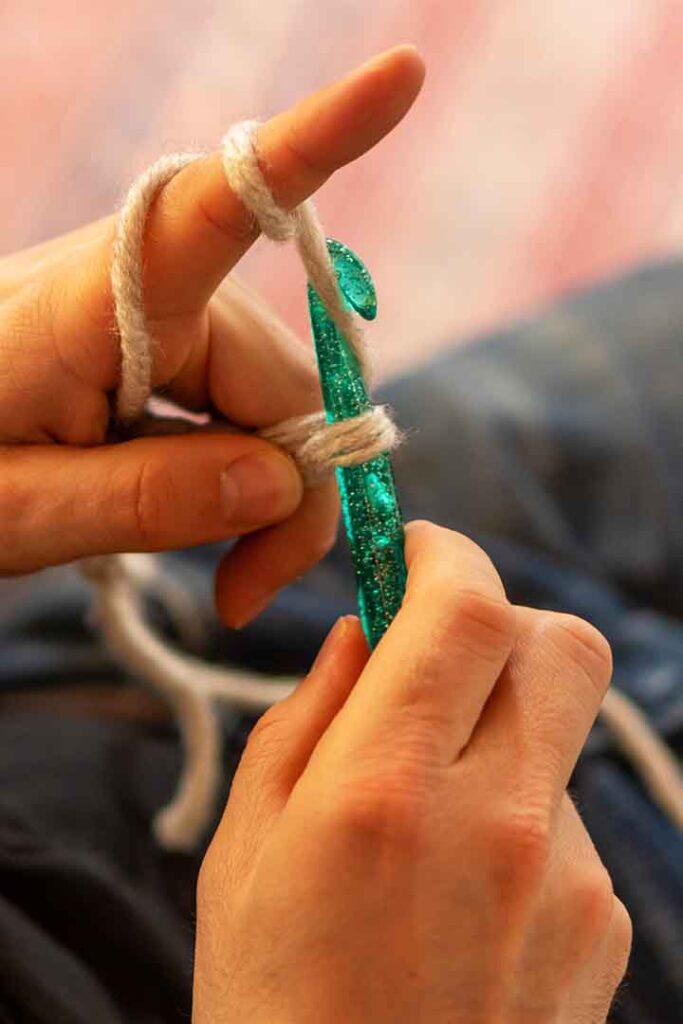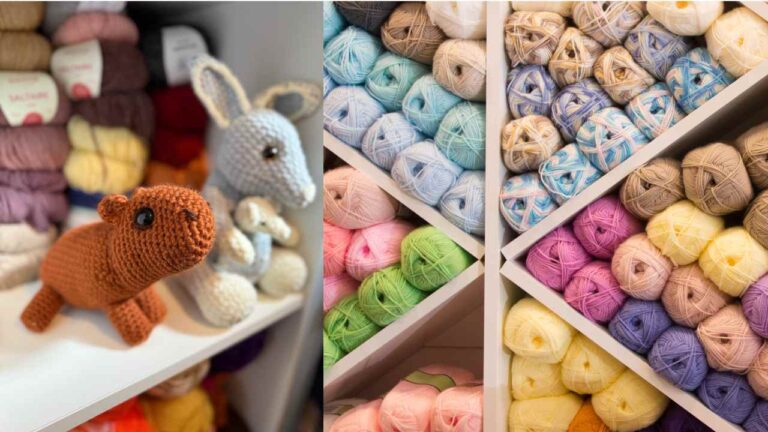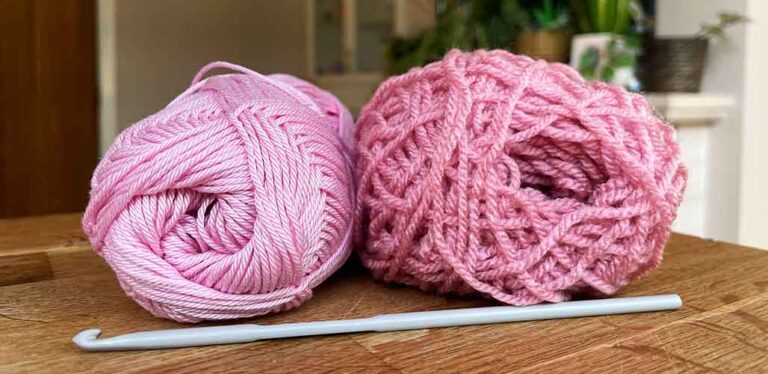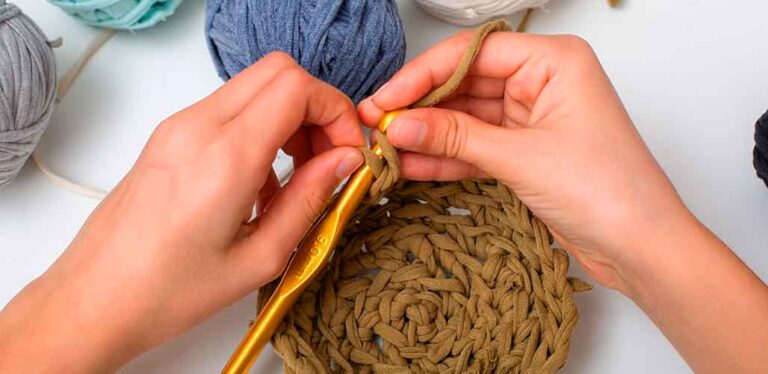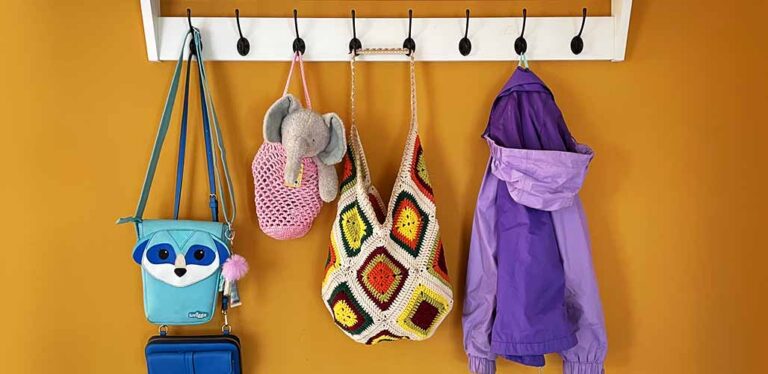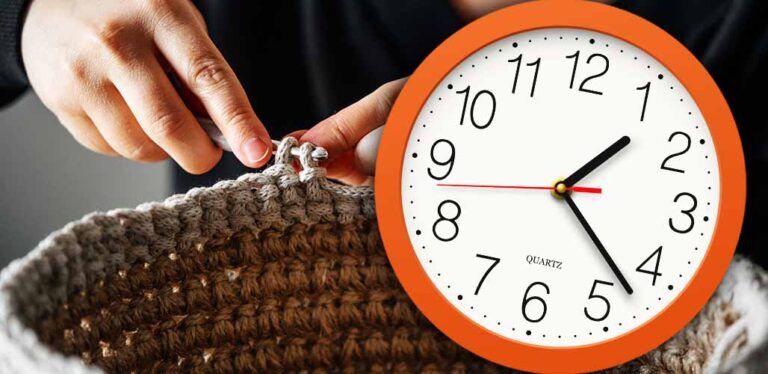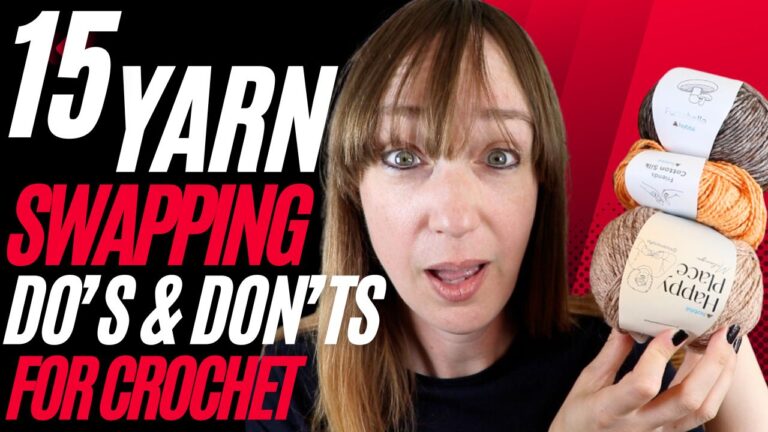Does Using A Bigger Crochet Hook Use Less Yarn?

Using a bigger crochet hook usually uses less yarn. Since the size and density of stitches in crochet is partly determined by hook size, it stands to reason that this will work to save wool. But, it can also have unwanted and unpredictable effects on the gauge and final size of the project.
A bigger crochet hook uses less yarn by length than a smaller crochet hook, to cover the same surface area. But it uses about the same amount by weight. To use a larger hook than a pattern calls for, you will probably need to adjust how many stitches are called for. You might also experience problems with tension, happiness in the fabric, and seams not matching up as they should. Ultimately the material saving will be limited too, so it’s not much use as a money saving hack.
Contents
- Does using a bigger crochet hook use less yarn?
- Measuring yarn: length vs weight
- How much yarn can you save?
- Why I love supersize projects
I love finding thrifty hacks to save money or make materials go further when I’m working on creative projects. It doesn’t usually stop me spending as much at the craft store, but it does at least make my hard earned cash go further!
Does Using A Bigger Crochet Hook Use Less Yarn?
The shortest possible answer to this question is ‘yes, usually’. So you can probably already tell that the answer is not entirely straight forward! Bigger hooks make loser, more open stitches which cover more area, using less yarn in the process. But needle size is not the only thing that determines consumption. Other factors include:
- Tension/gauge
- The type of fiber you’re working with
- The type of stitch you’re using
Measuring Yarn: Length Vs Weight
When you buy a ball of wool, take a look at the wrapper and you’ll find that the quantity is described in two units: length and weight. For example, some fingering yarn for making socks might say 100g/400m/437yds on the wrapper. That’s how much the ball weighs, and the length of it in meters and yards. By contrast, a ball of chunky yarn in my collection says this: 100g 80m/87yds. In other words, it’s shorter, but it weighs the same because it is thicker. No surprises there. But let’s see what this has to do with hook size.
Big hooks are usually reserved for chunky yarns, whilst narrower ones are used for fine fibers. Choosing an appropriate hook size for the yarn you’re working with is important for achieving the correct tension and gauge (ie. number of stitches per square inch). If you use a large hook to work with 4 ply wool, you will use less yarn, but there will be big gaps in your stitches, and it will be harder to make them all appear uniform.
In other words, using a bigger hook only uses less yarn if you bend the rules of how crochet is normally done. They use relatively less yarn if you measure it by length, but when used with a suitable thickness of yarn, they use about the same amount by weight.
Tell Me More About Bending The Rules Anyway
Say you want to make a beanie hat with a 22” circumference (which would fit most adults). The pattern you’ve found calls for a G hook (4.25mm) and DK wool. If you use an H or I and follow the pattern accurately, you will still use about the same amount of yarn, but your hat will be bigger than 22”. It could even fall off when you look down!
To actually use less yarn, you also need to adjust the pattern. Some beanie patterns are given in multiple sizes anyway, so you could try using a larger hook and following the instructions for a smaller size, so the two balance each other out. This is the easiest approach if you’re fairly new to crochet, but the results are not guaranteed to be successful.
Alternatively, if you’re feeling confident, you could make a sample of the main stitch used in the pattern using your bigger hook, and use the dimensions of that swatch to adjust the number of stitches in the headband to secure a proper fit.
But how far can either of these techniques take you? Well, you’re going to have to make a decision:
- Choose a hook which is only slightly bigger than the pattern calls for. Adjusting the pattern so the hat still fits will be easier, but the amount of yarn saved will be negligible.
- Have a go with a much bigger hook. The amount of yarn saved will be greater, but the pattern will need more adjusting. More importantly, you will end up with bigger gaps between your stitches, so your hat will be less warm. It’s also likely that you’ll have difficulty maintaining an even tension.
Is It Worth It?
I think it’s usually not. Trying to save yarn by using a bigger hook involves a lot of mental gymnastics to adapt the pattern, in exchange for very little in actual savings. Crochet patterns which call for big tools and bulky chenilles use fewer yards of fiber, but a similar amount by weight. So choosing these projects won’t save you money overall either. But, don’t throw your big hook down in disgust just yet!
Benefits of Using a Bigger Hook to Crochet
There are lots of things I love about projects that demand big tools!
- They often drape beautifully
- They work up quickly
- A bigger hook can help you avoid working too tightly
- They’re more comfortable to hold
- You’ll be able to see your stitches better
Big hooks make fabrics that drape beautifully
Crochet has always had a reputation for being a bit more rigid and boxy than knitting. And I think one of the reasons it’s seen an increase in popularity recently is that designers are starting to release patterns that do use slightly larger hooks than the weight of yarn traditionally calls for. And the result is a more supple, stretchy, modern fabric. Of course, this goes against everything I said earlier, but when you’ve got years of experience under your belt, that’s when you’re allowed to start bending the rules! And the results have been stunning.
Big tools + big yarn = quick progress
Making stitches on a bigger scale means you’ll finish a granny square, hat, or scarf in fewer stitches. So it’s perfect when you want a quick crafting fix, without committing yourself to weeks of effort. My favorite time to work on jumbo projects is when I need a break from something more long term and complex. Sweaters and blankets are feats of mental and physical stamina as well as craftsmanship. Taking a break in the middle to make something quick gives me a little dose of accomplishment and helps me power on with the rest of a big project.
A bigger hook can help you avoid crocheting too tightly
If your crochet naturally tends towards the tight, and your pre-project swatches always come up small, then working with a bigger hook can counteract that.
They’re more comfortable to hold
Lots of us have problems with dexterity in our hands for one reason or another. In my case, I suffer from chronic chilblains in winter, which causes swelling in my fingers and restricts how tightly I can curl them. When this happens, gripping small needles gets unrealistic, and switching to larger ones means I can keep on crafting. Other people I’ve spoken to say using a larger hook helps reduce cramp, muscle fatigue and joint pain.
You’ll be able to see your stitches better
If you have trouble seeing your stitches, working on a larger scale literally magnifies your work for you, and makes it simpler to keep track of progress. For novice crocheters, working in a smooth, chunky wool makes it easier to see what’s happening at each stage of the process, and also spot mistakes if it starts to go wrong.
Does Using A Bigger Crochet Hook Use Less Yarn? Summary
Do You Like Chunky Projects?
Let us know what you’ve been working on in the comments box down below!
